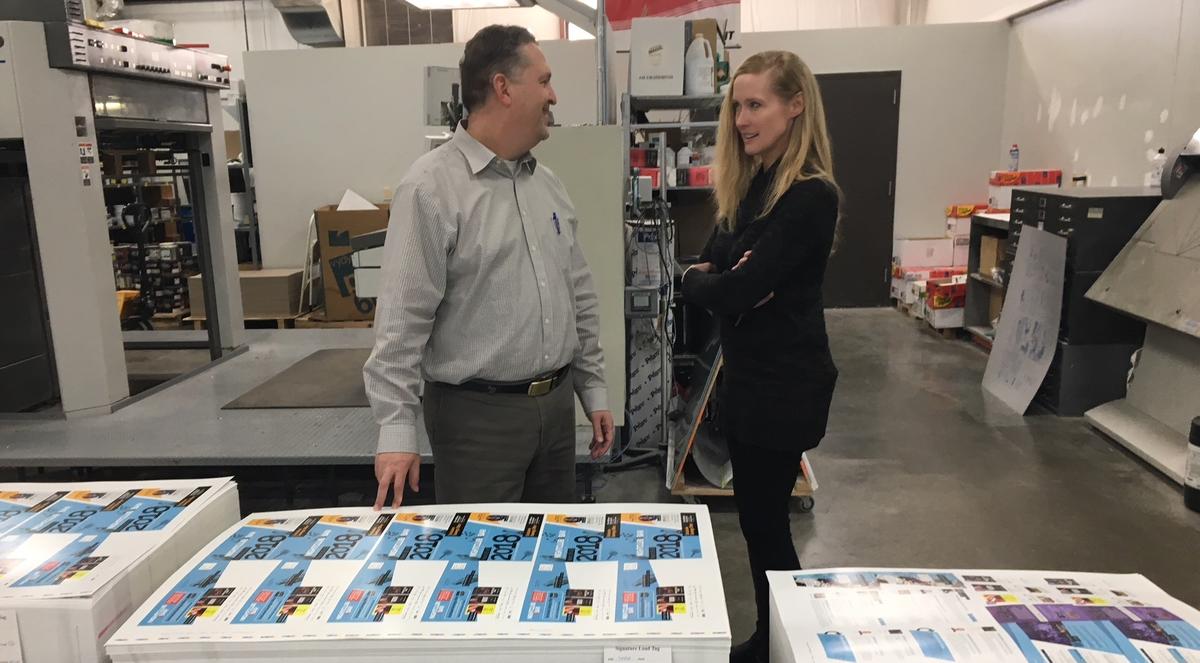In an ironic, self-perpetuating way, it takes a lot of paper to be in the paper printing business. Hundreds of print jobs daily with inches thick folders for each one – work orders, proofs, changes, notes – following the job through the print process.
And stacks of files stored for years, just in case. Rooms filled with shelves loaded down with boxes of files. Turns out, this is pretty typical for print shops. At least Midwest printers that Heidi Zierden called to ask about record keeping best practices.
Zierden is a UMD instructor in Lean Six Sigma helping Shima Hosseinpour become certified in the efficiency methodology. Working toward a so called “black belt,” Hosseinpour, NRRI Strategic Project Manager, will have a skillset that could be useful to small businesses she helps move through hurdles to success.
And at ProPrint in Duluth, the project transitioned the printers away from thick paper files, saving the company more than $40,000 while increasing space, efficiency and paper trail headaches.
“On any given day, the customer service rep could spend an hour chasing down a (work order) ticket through the process,” said ProPrint President Creston Dorothy. “When Heidi took on this project, I wanted to fix the ticket flow and archiving – some files could be six inches thick. It was just overwhelming.”
Zierden started with the low hanging fruit. Why keep boxes upon boxes of old files for five to seven years? The answer: Just in case customers wanted to do a reprint. Her study of how many customers actually needed old files to do a reprint showed that about 80 percent of the time they wanted files just two years old or less. An entire area dedicated to filing was eliminated, making room for new equipment.
“And this even impacts safety,” said Zierden. “No one’s been hurt, but standing on a ladder pulling down big boxes of files. It’s easy to see how it could get away from you.”
The more difficult part of the project was changing habits. ProPrint had the software to do electronic work orders, but the workers would print the orders and the change orders, just because that’s what they were used to.
Zierden and Hosseinpour developed a Standard Operating Procedure for electronic work orders and trained the staff.
Ed Dallum, ProPrint plant manager, acknowledges that some staff were skeptical. Now, however, he thinks that if given the option to go back to paper tickets, no one would do it. Electronic work orders are always up-to-date and clear. Errors are reduced. Time is saved.
“We’re seeing benefits we didn’t even anticipate,” Dallum said.
But isn’t it ironic that a business that promotes the use of hard copies has embraced paperless?
Perhaps the fact that ProPrint continues to grow is answer enough. But Dallum added with a grin, “Forms are more efficient when they’re electronic. Advertising is always more effective in print.”
